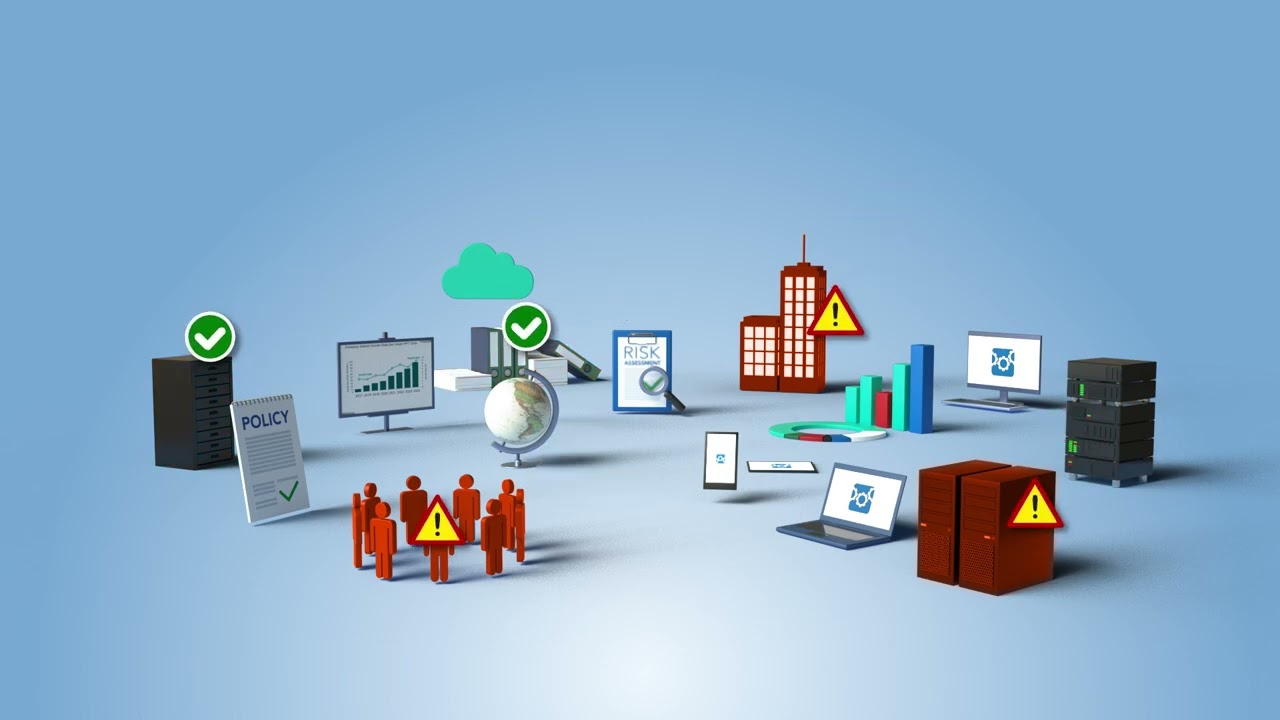Your Roadmap to Risk Reduction!
Table of Contents
ToggleThe Continuum GRC ITAM SaaS platform has hundreds of plugin modules available, such as:

The Spanish Esquema Nacional de Seguridad (ENS) accreditation scheme has been developed by La Entidad Nacional de Acreditación (ENAC) in close collaboration with the Ministry of Finance and Public Administration and the National Cryptologic Centre (CCN).
Modules include:
- Spain Esquema Nacional de Seguridad (ENS) High
- Spain Esquema Nacional de Seguridad (ENS) Intermediate
- Spain Esquema Nacional de Seguridad (ENS) Low
What are you waiting for?
You are just a conversation away from putting the power of Continuum GRC to work for you.
Contact us using the form below or calling us at 1-888-896-6207 for immediate assistance.
If you have received this message in error, please contact us using the telephone number listed on our website for assistance.
About this standard
The Esquema Nacional de Seguridad (ENS), or Spanish National Security Framework, is a regulatory framework established to ensure the security of information systems and data processed by public sector entities and their private sector technology providers in Spain. Below is a concise yet comprehensive compliance overview of the ENS, based on its principles, requirements, and processes as outlined in Royal Decree 311/2022.
Purpose of the ENS
The ENS aims to:
- Protect information and services managed by public administrations and their suppliers.
- Ensure confidentiality, integrity, availability, authenticity, and traceability of data and electronic services.
- Build trust in electronic systems by establishing a common framework of security principles and measures.
- Promote proactive risk management and compliance with Spanish and EU regulations, such as GDPR and the NIS2 Directive.
It applies to:
- All Spanish public sector entities (e.g., General State Administration, Autonomous Communities, Local Administrations, public universities).
- Private companies providing technology services or managing systems for public administrations.
Key Components of ENS Compliance
The ENS is structured around basic principles, minimum requirements, and security measures to safeguard information systems. Compliance involves:
- Basic Principles:
- Comprehensive Security: Addresses all aspects of the system, including physical infrastructure, processes, data (digital and paper), personnel, and third-party services.
- Risk Management: Requires systematic risk analysis to identify threats, assess impacts, and implement proportional controls.
- Prevention, Detection, Response, and Recovery: Encompasses the full incident lifecycle to ensure system resilience.
- Periodic Reassessment: Regular reviews to adapt to technological, organizational, or regulatory changes.
- Differentiated Functions: Separates roles (e.g., information, service, security, and technical operations) to avoid conflicts of interest.
- Continuous Improvement: Promotes ongoing enhancement of security practices.
- Regulatory Compliance: Aligns with GDPR, NIS2, and other applicable laws.
- Responsibility and Commitment: Involves all organizational levels in security governance.
- Security Measures: The ENS specifies 73 security measures categorized into three frameworks:
- Organizational (16 measures): Define security policies, roles, and incident management (e.g., appointing security managers).
- Operational (31 measures): Protect system operations (e.g., secure configurations, access controls).
- Protection (26 measures): Safeguard specific assets (e.g., data encryption, backups, facility security). These measures are applied at three levels—Base, Reinforced, and High—based on the system’s criticality and sensitivity (low, medium, or high).
- Compliance Profile:
- Introduced in Royal Decree 311/2022, this allows organizations to tailor measures to their specific context, considering:
- System Criticality: Importance of the system for operational continuity or data sensitivity.
- Cybersecurity Maturity: Organizational capacity to manage security.
- Available Resources: Budget, personnel, and infrastructure.
- Documented in a Statement of Applicability and Adaptation Plan, which outlines applicable measures and implementation timelines.
- Introduced in Royal Decree 311/2022, this allows organizations to tailor measures to their specific context, considering:
ENS Compliance Process
To achieve and maintain ENS compliance, organizations follow a structured process:
- Risk Analysis:
- Identify threats, vulnerabilities, and potential impacts.
- Determine the system’s security category (low, medium, high) using dimensions like confidentiality, integrity, availability, authenticity, and traceability.
- Statement of Applicability:
- Document which ENS measures apply and their implementation level (Base, Reinforced, High).
- Adaptation Plan:
- Outline activities, resources, and deadlines for implementing measures.
- Prioritize actions based on risk and criticality.
- Implementation:
- Execute the adaptation plan, including policies, technical controls, training, and audits.
- Periodic Audits:
- Conduct internal or external audits to verify compliance.
- Audits for medium- and high-sensitivity systems are mandatory and performed by ENAC-accredited entities.
- Certification:
- Systems handling low-sensitivity data have voluntary certification.
- Medium- and high-sensitivity systems require mandatory certification by the National Cryptologic Center (CCN).
- Steps include:
- Internal self-assessment.
- Audit by an accredited entity.
- Issuance of a conformity report and CCN certificate.
Key Regulations and Standards
- Royal Decree 311/2022: Current governing regulation, effective since May 2022, with a transition period ending April 2024.
- Alignment with ISO 27001: Many ENS controls align with ISO 27001, facilitating integration for organizations already certified.
- NIS2 Directive: The ENS is being updated to align with the EU’s NIS2 Directive (2022/2555) for critical infrastructure security.
- CCN-STIC Guides: Provide detailed implementation guidance (e.g., CCN-STIC 808 for system categorization, CCN-STIC 887 for cloud services).
Benefits of ENS Compliance
- Risk Reduction: Mitigates cyber threats and vulnerabilities.
- Regulatory Compliance: Ensures adherence to Spanish and EU laws, avoiding penalties.
- Enhanced Trust: Builds confidence among citizens and third parties in digital services.
- Operational Efficiency: Improves security management and system resilience.
- Market Advantage: Mandatory for public sector contracts, enhancing competitiveness for private providers.
Challenges and Considerations
- Resource Intensity: Compliance requires significant investment in time, personnel, and technology.
- Complexity for Small Entities: Smaller organizations may struggle with resource constraints, mitigated by the compliance profile’s flexibility.
- Transition Period: Full compliance with Royal Decree 311/2022 was required by April 2024, necessitating timely adaptation.
- Continuous Monitoring: Ongoing audits and updates are needed to maintain certification.
Certification and Accreditation
- Accreditation: Certification bodies must be accredited by the Entidad Nacional de Acreditación (ENAC).
- Certification Levels: Low (voluntary), Medium, and High (mandatory for sensitive systems).
- Validity and Renewal: Certificates are valid for a defined period (typically 2-3 years), requiring renewal audits.
- Major Providers: Companies like Microsoft, AWS, and Google Cloud have achieved ENS High certification for their cloud services, demonstrating compliance for public sector use.
Best Practices for ENS Compliance
- Conduct Regular Risk Assessments: Stay proactive in identifying and mitigating risks.
- Leverage Tools: Use tools like Continuum GRC for compliance checks.
- Engage Accredited Auditors: Ensure audits meet CCN and ENAC standards.
- Train Staff: Foster a security-aware culture across all organizational levels.
- Align with Other Standards: Integrate ENS with ISO 27001 or NIS2 for efficiency.
- Monitor Updates: Stay informed on CCN-STIC guides and NIS2 transposition into Spanish law.
Amazing Benefits

